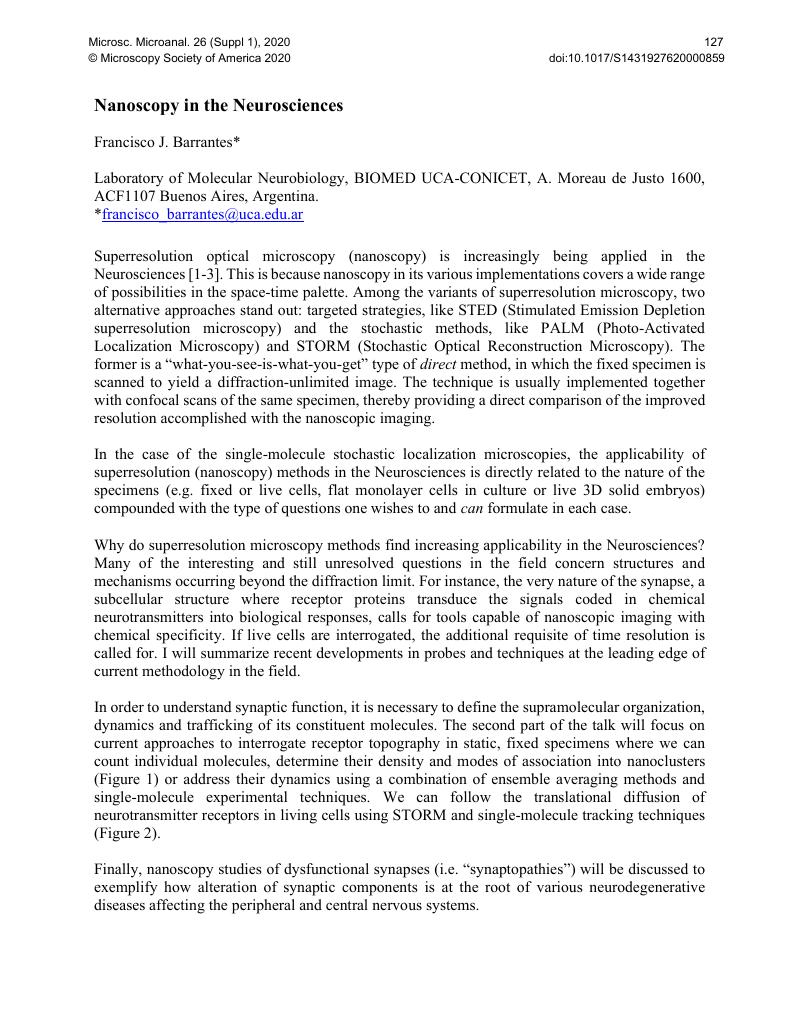No CrossRef data available.
Article contents
Nanoscopy in the Neurosciences
Published online by Cambridge University Press: 28 April 2020
Abstract
An abstract is not available for this content so a preview has been provided. As you have access to this content, a full PDF is available via the ‘Save PDF’ action button.

- Type
- Abstract
- Information
- Microscopy and Microanalysis , Volume 26 , Supplement S1: Proceedings of 15th Interamerican Microscopy Congress CIASEM - SAMIC , March 2020 , pp. 127 - 128
- Copyright
- Copyright © Microscopy Society of America 2020
References
[1]Eggeling, C., Willig, K.I. & Barrantes, F. (2013). STED microscopy of living cells – New frontiers in Membrane and Neurobiology. J. Neurochemistry (0022.3042) 126: 203-212.10.1111/jnc.12243CrossRefGoogle ScholarPubMed
[2]Willig, K.I. & Barrantes, F.J. (2014). Recent Applications of Superresolution Microscopy in Neurobiology. Current Opin. Chem. Biol. 20:16–21.Google Scholar
[3]Barrantes, F.J. (2016). Single-molecule localization superresolution microscopy of synaptic proteins. Shukla, A.K. (ed.), Springer Protocols Handbooks, DOI 10.1007/8623_2016_10, Media, pp. 1-42.Google Scholar
[4]Mosqueira, A., Camino, P.A. & Barrantes, F.J. (2018). Cholesterol modulates acetylcholine receptor diffusion by tuning confinement sojourns and nanocluster stability. Sci. Reports 8, 11974, https://doi.org/10.1038/s41598-018-30384-yGoogle ScholarPubMed




